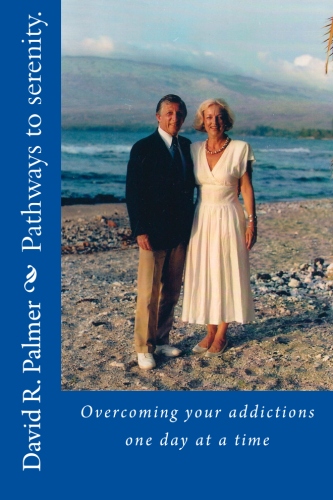If you are pregnant don’t drink.
If you are drinking don’t get pregnant
By Cynthia Crone
Don’t drink if you are pregnant or may become pregnant. Period. It sounds harsh, doesn’t it? It may to some, but not to those who are paying the price.
Like this family.
Ginny’s mother and father are having marital problems. And parenting problems. And school problems. It seems that all the problems have something in common: Ginny.
A slender, bubbly, energetic 9-year- old, Ginny is outgoing and friendly, yet she can’t seem to make friends and keep them. Her kindergarten teacher recommended that she wait until age 7 to start first grade so she could “grow up a little.” Now she’s struggling to pass to third grade.
Ginny cannot read well or remember basic math concepts. She’s easily distracted in the classroom and her constant activities and talking “bother” other students. She’s impulsive, often getting out of her chair without permission, and more than once she’s been caught lying to her teacher.
It’s not uncommon for Ginny to blurt out words or laugh or cry inappropriately. She gets in trouble at recess frequently, and gets upset when the other children tease her. She doesn’t respond to usual classroom management techniques and her medication for ADHD doesn’t seem to be working. Ginny’s teacher doesn’t know what to do with her, and is now asking that she be moved to a “behavior classroom.”
At home, Ginny’s mom has tried interventions she learned in parenting classes, like “time out” and taking away privileges, but nothing seems to work. Ginny just keeps doing the same things over and over again, no matter what the consequences have been. She takes “forever” to get ready for school and they often are late.
It’s hard for her to fall asleep and stay asleep, and her mom reports, “we have no schedule — our whole family is worn out.” Her mom reports that Ginny’s 12-year-old sister, Kate, was nothing like this when she was 9. In fact, Ginny seems to act more like her six-year-old cousin. Kate “can’t stand” her sister because she acts weird, interrupts her circle of friends, and embarrasses her.
Ginny loves to take care of her puppy, and her favorite playmate is the 4-year- old who lives across the street. She loves to paint and play with Play Dough, but makes a mess so her mom doesn’t let her do that very often. She has a soft teddy bear that she likes to cuddle, and she has a baby toy that she refuses to give up.
Ginny’s doctor recommended that she be evaluated at the developmental clinic. The preliminary thought is that Ginny has Fetal Alcohol Spectrum Disorder (FASD).
FASD is a term describing a range of effects that can occur in an individual whose mother drank alcohol during pregnancy. These effects include physical, cognitive, and behavioral disabilities that can interfere with growth, learning and socialization across the lifetime.
Irreversable Damage
Even a small amount of alcohol has been associated with FASD. which is the number one cause of developmental delay and intellectual deficit in the United States. The injuries to the developing brain are permanent, irreversible, and often invisible.
Ginny’s mom had stated that she didn’t have a problem with alcohol. She did drink wine after work and with dinner while pregnant, she said, but never more than two glasses a day. Most days she didn’t drink at all. Once, before she knew she was pregnant, she drank a little more at the lake one weekend. …but definitely not more than she did when pregnant with Kate.
Besides, she said, Ginny didn’t have any of the facial features usually associated with alcohol abuse in mothers. She was referring to Fetal Alcohol Syndrome (FAS) which is a specific diagnosis within FASD and has three major components: a characteristic pattern of facial differences, below average growth, and brain damage.
FAS was identified in 1973. It occurs in 1-2 babies per 1,000 births whereas, FASD, the more widespread and more recently identified condition, likely occurs in at least 1 per 100 births. Unlike FAS, there are no outward physical signs of FASD.
Affected children have difficulty learning, remembering, and getting along well with others. They process information differently — and more slowly. They often have visual, sensory, language, and behavior problems and are often oversensitive to stimuli (like a tag in a shirt or seams in socks).
Easily Distracted
Persons with FASD are easily distracted (by noises, lights, or activities), and forgetful (like not remembering more than one instruction at a time or forgetting how to do a task they learned yesterday). Their behavior is often misinterpreted as purposefully mean or irritating.
Affected children often have problems with math and abstract thinking. They take things very literally—including common jargon. For example, if a child with FASD is greeted with the salutation, “What’s up?”, he or she may look toward the ceiling or sky to see “what’s up?”.
Children living with FASD and their families and caregivers often become frustrated. Continuing frustrations then place affected children at very high risk for development of secondary disabilities including mental health and later alcohol and drug disorders. Other secondary disabilities include learning, legal, social, employment and living problems.
The good news is that secondary disabilities can be prevented. Children with FASD who are identified before age six have better long-term outcomes. Children whose brain disorder is understood can benefit from specific environmental adaptations to help them succeed at home, in school, and with their peers. These interventions can build on their strengths.
And, children with FASD have many strengths. They are friendly, curious, persistent, loyal, happy, and are often good with animals and younger children. They respond well to visual reminders, routines, and careful planning for changes.
As we build on their strengths and support affected children and their caregivers, a helpful rule of thumb is to consider the developmental age of a child with FASD to be 2/3 their chronological age. For example, a six year old will be more like a four year old developmentally; an 18 year old more like a 12 year old.
Since there are no outward signs of FASD, most children with this disorder are not recognized as having FASD by family, teachers, or friends until the child does poorly in school—academically and socially. Medications usually prescribed for attention deficit hyperactivity disorder (ADHD) often don’t work for children with FASD.
This lifelong and costly disorder is 100 percent preventable if pregnant women don’t drink alcohol. While some pregnant women with alcohol addiction give birth to perfectly healthy babies without FASD, other women who are “social drinkers” and do not have an alcohol use problem can have a baby with the disorder.
The best way to address FASD is to prevent it. However, with information and help, early identification of FASD is helping children like Ginny and their families, teachers, friends and others learn how to provide effective behavioral and learning supports to prevent secondary disabilities.
Editors note: Cynthia Crone, a pediatric nurse practitioner and member of the UAMS Partners for Inclusive Communities, is coordinator for Arkansas’ Closing the Addiction Treatment Gap project and a founder of Arkansas CARES.



